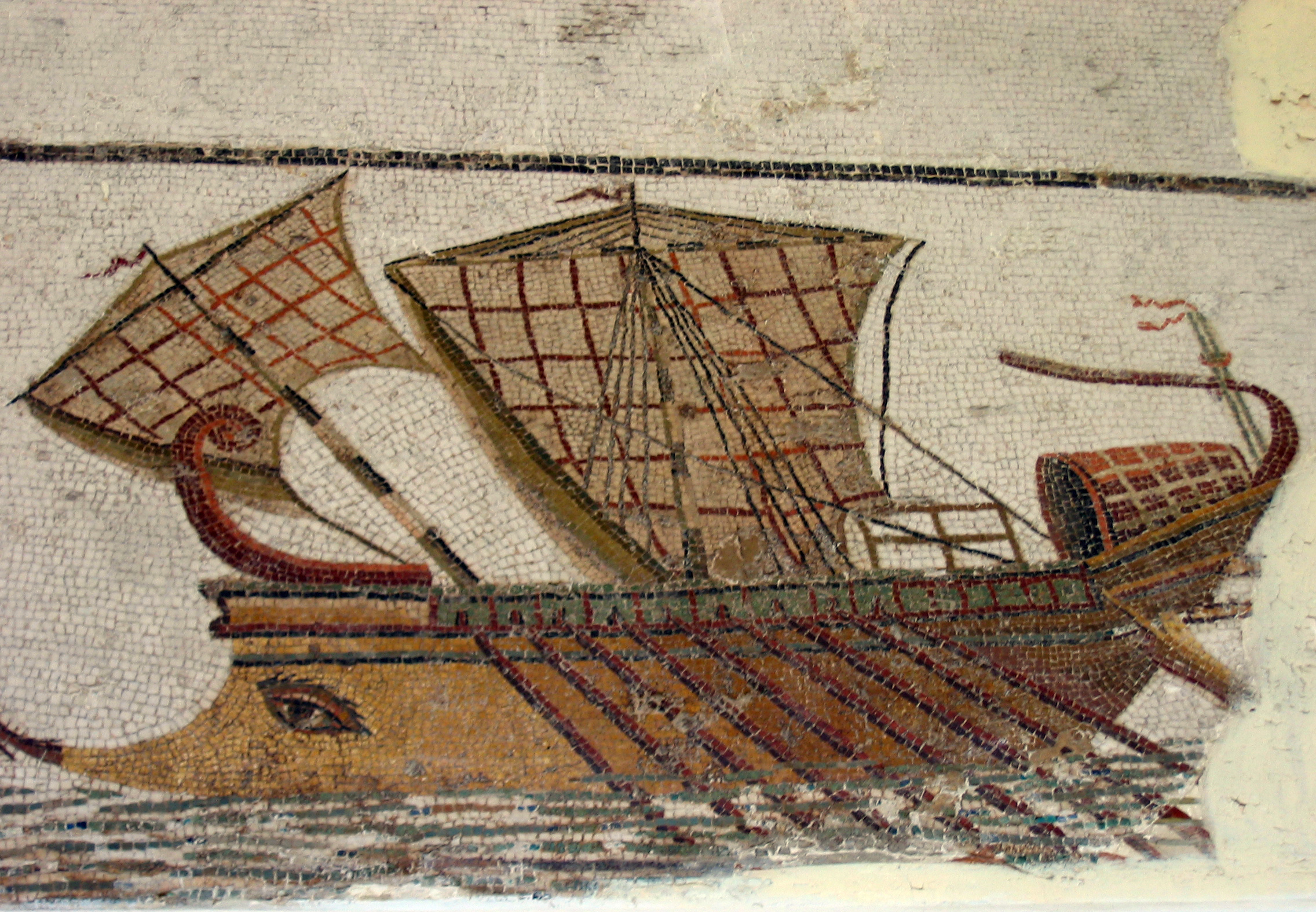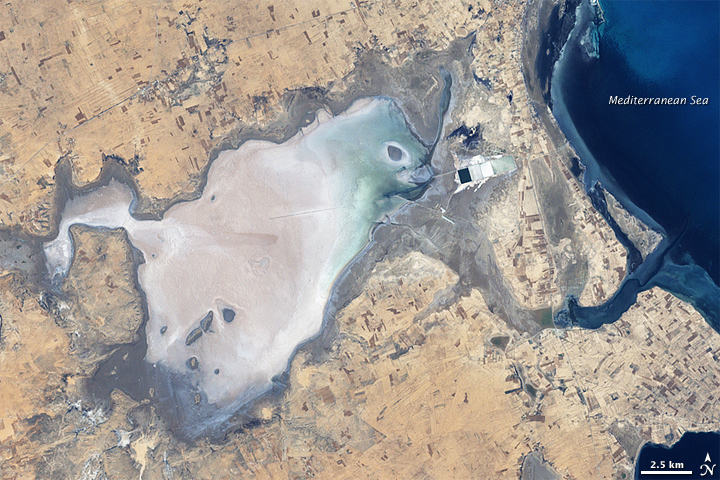|
Chott
In geology, a chott, shott, or shatt (; ) is a salt lake in Africa's Maghreb that stays dry for much of the year but receives some water in the winter. The elevation of a chott surface is controlled by the position of the water table and capillary fringe, with sediment deflation occurring when the water table falls and sediment accumulation occurring when the water table rises.Swezey, C.S., 2003, The role of climate in the creation and destruction of continental stratigraphic records: An example from the northern margin of the Sahara Desert, in Cecil, C.B., and Edgar, N.T., eds., Climate Controls on Stratigraphy: SEPM (Society for Sedimentary Geology) Special Publication 77, p. 207-225. They are formed—within variable shores—by the spring thaw from the Atlas mountain range, along with occasional rainwater or groundwater sources in the Sahara, such as the Bas Saharan Basin. Water sources The chotts of the Sahara are fed intermittently during periods of infrequent rainfa ... [...More Info...] [...Related Items...] OR: [Wikipedia] [Google] [Baidu] |
Chott El Djerid
Chott el Djerid ( ') also spelled ''Sciott Gerid'' and ''Shott el Jerid'', is a chott, a large endorheic salt lake in southern Tunisia. The name can be translated from the Arabic into English as "Lagoon of the Land of Palms". Geography The bottom of Chott el Djerid is located between 15 and 25 meters (about 50 to 80 feet) above sea level. The lake's width varies widely; at its narrowest point, it is only across, compared to its overall length of . At times, parts of it appear in various shades of white, green and purple. The narrow eastward inlet of the chott is also known as Chott el Fejej. It is the largest salt pan of the Sahara Desert, with a surface area of over 7,000 km2 (some sources state 5,000 km2). The site has a typical hot desert climate. Due to the harsh climate with mean annual rainfall of below 100 mm and daytime temperatures sometimes reaching 50 °C (122 °F) or more during summer with dense solar radiation, water evaporates from the la ... [...More Info...] [...Related Items...] OR: [Wikipedia] [Google] [Baidu] |
Chott Melrhir
Chott Melrhir, () also known as Chott Melghir or Chott Melhir, is an endorheic chott-kind of salt lake in northeastern Algeria. It is the westernmost part of a series of depressions which extend from the Gulf of Gabès into the Sahara. It was formerly known as Lake Tritonis. They were created between Miocene and Early Pleistocene as a result of compression accompanying the formation of the Atlas Mountains. With the maximum area of about , it is the largest lake in Algeria.В. М. Котляко�Мельгир (Chott Melrhir) Словарь современных географических названий (Dictionary of modern geographical names), 2003–2006 It lies almost entirely below sea level and contains the lowest point in Algeria, . Its size varies over the year and is usually larger than from east to west.Chott Melrhir< ... [...More Info...] [...Related Items...] OR: [Wikipedia] [Google] [Baidu] |
Chott Ech Chergui
Chott Ech Chergui () is a large endorheic salt lake in Saïda Province, northwestern Algeria. It is located at in the level terrain of the ''Hautes Plaines'' region between the Tell Atlas and the Saharan Atlas and is one of the largest lakes in Algeria. Ecology Chott Ech Chergui has an area of about 2000 km2 where water collects during the wet season, forming a number of large shallow salt lakes which become salt flats as they dry. The lake area has a length of about 160 km from ENE to WSW and lies at an average elevation of 1000 m. Chott Ech Chergui has been designated a Ramsar wetland of international importance. The Ramsar site has an area of 8555 km2 and is the natural environment for a number of threatened and vulnerable animal and plant species. See also *Geography of Algeria *''Hautes Plaines The Hautes Plaines ("High Plains", ), also known in French as Hauts Plateaux, is a steppe-like natural region located in the Atlas Mountains in northern Algeria. ... [...More Info...] [...Related Items...] OR: [Wikipedia] [Google] [Baidu] |
Chott El Fejej
In geology, a chott, shott, or shatt (; ) is a salt lake in Africa's Maghreb that stays dry for much of the year but receives some water in the winter. The elevation of a chott surface is controlled by the position of the water table and capillary fringe, with sediment deflation occurring when the water table falls and sediment accumulation occurring when the water table rises.Swezey, C.S., 2003, The role of climate in the creation and destruction of continental stratigraphic records: An example from the northern margin of the Sahara Desert, in Cecil, C.B., and Edgar, N.T., eds., Climate Controls on Stratigraphy: SEPM (Society for Sedimentary Geology) Special Publication 77, p. 207-225. They are formed—within variable shores—by the spring thaw from the Atlas mountain range, along with occasional rainwater or groundwater sources in the Sahara, such as the Bas Saharan Basin. Water sources The chotts of the Sahara are fed intermittently during periods of infrequent rain ... [...More Info...] [...Related Items...] OR: [Wikipedia] [Google] [Baidu] |
Djerid
el-Djerid, also al-Jarīd, (; Derja: ''Jrīd''; ) or more precisely the South Western Tunisia Region is a semi-desert natural region comprising three southern Tunisian Governorates, Gafsa, Kebili and Tozeur with adjacent parts of Algeria and Libya. Geography The region is characterised by bare pink hills with oases and several chotts (salt pans) such as Chott el Djerid in Tunisia. Economically the area is important for phosphate mining. Major towns include Gafsa and Tozeur. It remains the principal center of Ibāḍism in North Africa, with remaining Ibāḍī communities on Djerba in Tunisia, in the M'zab in Algeria, and in Jabal Nafusa in Libya. In medieval times, it often formed a politically separate entity under the control of Ibāḍī ''imams''. Location Jerid, Djerid'' or ''Bled el Djerid (Arabic : الجريد, literally "palm leaf"), is a semi-desert region situated in southwestern Tunisia, which extends to the contiguous areas of Algeria. In administrati ... [...More Info...] [...Related Items...] OR: [Wikipedia] [Google] [Baidu] |
Shatt Al Gharsah
Shatt al Gharsah, Chott el Gharsa () is a sedimentary basin and also intermittent salt lake (a chott) in Tunisia, near the border with Algeria Algeria, officially the People's Democratic Republic of Algeria, is a country in the Maghreb region of North Africa. It is bordered to Algeria–Tunisia border, the northeast by Tunisia; to Algeria–Libya border, the east by Libya; to Alger .... It has width of 20 kilometres and length of 50 kilometres. At 17 metres below sea level it is at the lowest point of the country. References {{Authority control Lakes of Tunisia Saline lakes of Africa Lowest points of countries ... [...More Info...] [...Related Items...] OR: [Wikipedia] [Google] [Baidu] |
Salt Lake
A salt lake or saline lake is a landlocked body of water that has a concentration of salts (typically sodium chloride) and other dissolved minerals significantly higher than most lakes (often defined as at least three grams of salt per liter). In some cases, salt lakes have a higher concentration of salt than sea water; such lakes can also be termed hypersaline lake, and may also be pink lakes on account of their color. An alkalic salt lake that has a high content of carbonate is sometimes termed a soda lake. Salt lakes are classified according to salinity levels. The formation of these lakes is influenced by processes such as evaporation and deposition. Salt lakes face serious conservation challenges due to climate change, pollution and water diversion. Classification The primary method of classification for salt lakes involves assessing the chemical composition of the water within the lakes, specifically its salinity, pH, and the dominant ions present. Subsaline Sub ... [...More Info...] [...Related Items...] OR: [Wikipedia] [Google] [Baidu] |
Maghreb
The Maghreb (; ), also known as the Arab Maghreb () and Northwest Africa, is the western part of the Arab world. The region comprises western and central North Africa, including Algeria, Libya, Mauritania, Morocco, and Tunisia. The Maghreb also includes the territorial dispute, disputed territory of Western Sahara. As of 2018, the region had a population of over 100 million people. The Maghreb is usually defined as encompassing much of the northern part of Africa, including a large portion of the Sahara Desert, but excluding Egypt and the Sudan, which are considered to be located in the Mashriq — the eastern part of the Arab world. The traditional definition of the Maghreb — which restricted its scope to the Atlas Mountains and the coastal plains of Morocco, Algeria, Tunisia and Libya — was expanded in modern times to include Mauritania and the disputed territory of Western Sahara. During the era of al-Andalus on the Iberian Peninsula (711–1492), the Maghreb's inhabita ... [...More Info...] [...Related Items...] OR: [Wikipedia] [Google] [Baidu] |
Sabkha
A sabkha () is a predominately coastal, supratidal mudflat or sandflat in which evaporite-saline minerals accumulate as the result of a semiarid to arid climate. Sabkhas are gradational between land and intertidal zone within restricted coastal plains just above normal high-tide level. Within a sabkha, evaporite-saline mineral sediments typically accumulate below the surface of mudflats or sandflats. Evaporite-saline minerals, tidal-flood, and aeolian deposits characterize many sabkhas found along modern coastlines. The accepted type locality for a sabkha is at the southern coast of the Persian Gulf, in the United Arab Emirates.Neuendorf, K.K.E., J.P. Mehl, Jr., and J.A. Jackson, eds. (2005) ''Glossary of Geology'' (5th ed.). Alexandria, Virginia, American Geological Institute. 779 pp. Tucker, M.E. and Wright, V.P., 2009. ''Carbonate sedimentology.'' John Wiley & Sons. and Warren, J.K., 2006. Evaporites: sediments, resources and hydrocarbons. Springer Science & Business Media ... [...More Info...] [...Related Items...] OR: [Wikipedia] [Google] [Baidu] |
Sahara
The Sahara (, ) is a desert spanning across North Africa. With an area of , it is the largest hot desert in the world and the list of deserts by area, third-largest desert overall, smaller only than the deserts of Antarctica and the northern Arctic. The name "Sahara" is derived from , a broken plural form of ( ), meaning "desert". The desert covers much of North Africa, excluding the fertile region on the Mediterranean Sea coast, the Atlas Mountains of the Maghreb, and the Nile, Nile Valley in Egypt and the Sudan. It stretches from the Red Sea in the east and the Mediterranean in the north to the Atlantic Ocean in the west, where the landscape gradually changes from desert to coastal plains. To the south it is bounded by the Sahel, a belt of Tropical and subtropical grasslands, savannas, and shrublands, semi-arid tropical savanna around the Niger River valley and the Sudan (region), Sudan region of sub-Saharan Africa. The Sahara can be divided into several regions, including ... [...More Info...] [...Related Items...] OR: [Wikipedia] [Google] [Baidu] |





